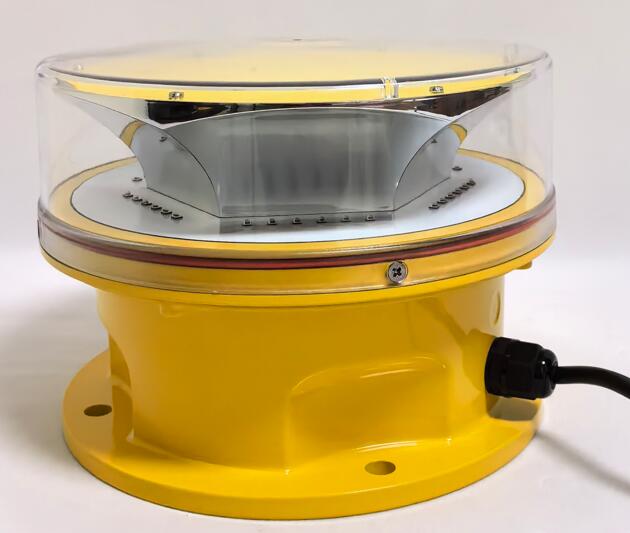The Urban Airspace Sentinel: The Critical Role of Aviation Lights on Buildings
The global skyline is a testament to human ingenuity, with skyscrapers and tall structures reaching unprecedented heights. Yet this vertical expansion creates an invisible landscape of potential hazards for aircraft. The solution—a sophisticated network of aviation lights on buildings—transforms these static obstacles into clearly defined, navigable reference points. This system of illumination represents a critical intersection of urban development and aerial safety, where architecture meets aviation regulation in a silent pact to protect human life.
The installation of aviation lights on buildings is not merely a recommendation but a mandatory requirement governed by international and national aviation authorities. Organizations such as the International Civil Aviation Organization (ICAO) and the Federal Aviation Administration (FAA) establish precise regulations regarding when and how structures must be marked. These rules are based primarily on a building’s height relative to the surrounding terrain and its proximity to airport approach paths. The fundamental principle is straightforward: any structure that penetrates protected airspace must be made conspicuously visible to pilots through both day and night, under all weather conditions.
A properly implemented system of aviation lights on buildings utilizes a carefully calibrated combination of lighting technologies. Red obstruction lights, typically steady-burning L-810 fixtures, are the most common solution for marking buildings at night. Their persistent crimson glow provides a constant visual warning. For taller structures and those deemed especially hazardous, high-intensity white strobe lights (L-865) are employed. These brilliant, flashing lights are designed to capture attention against bright daytime skies. Often, buildings will utilize a dual system: red lights for nighttime and twilight operation, and white strobes for daytime, ensuring optimal conspicuity across all lighting conditions.
The placement of these lights is a precise science. Regulations specify that aviation lights on buildings must be installed at the highest point of the structure—typically on the rooftop—and at intermediate levels if the building exceeds a certain height. This tiered approach ensures the structure’s full profile is defined, preventing it from blending into background city lights or terrain. The specific number, spacing, and arrangement of fixtures are meticulously calculated to guarantee the building is recognizable as a substantial obstacle from every angle of approach.

The proliferation of skyscrapers in urban centers has created unique challenges for implementing effective lighting systems. A dense cluster of tall buildings requires coordinated lighting strategies to prevent visual clutter that could confuse pilots. In some districts, regulations may mandate synchronized strobes to create a unified flashing pattern across multiple structures, reducing distraction and enhancing overall airspace awareness. This coordination is essential for maintaining a clear and intelligible visual language in complex airspace.
Technological advancement has dramatically improved the efficiency and effectiveness of aviation lights on buildings. Light Emitting Diode (LED) technology has largely replaced older incandescent and xenon strobe systems. LEDs offer superior performance with significantly lower power consumption, extended service life, and enhanced reliability. Their solid-state construction makes them more resistant to vibration and extreme weather, crucial for fixtures installed in exposed locations. Furthermore, LEDs provide brighter and more consistent light output, improving visibility for pilots.
| aviation lights on buildings |
Modern systems extend beyond simple illumination to incorporate intelligent control and monitoring. An aviation light control panel serves as the brain of the installation, automating operation based on ambient light levels detected by photocells. More advanced systems integrate with obstruction light monitoring technology, continuously checking the status of each fixture and immediately alerting maintenance personnel to any failures. This capability for remote monitoring is particularly valuable for difficult-to-access skyscraper rooftops, ensuring prompt response to maintenance needs and maximizing system reliability.
The implementation of aviation lights on buildings must balance safety requirements with environmental and community considerations. The intense illumination necessary for aviation safety can create light pollution concerns for surrounding residents. Modern solutions address this through careful directional aiming of fixtures, using shields to prevent light spillage, and implementing intensity-reduction protocols during periods of exceptionally clear visibility. These measures help mitigate community impact while maintaining full compliance with aviation safety regulations.
As urban air mobility continues to evolve with the anticipated expansion of drone delivery services and urban air taxis, the role of aviation lights on buildings will become even more critical. These new aircraft will operate at lower altitudes and in closer proximity to structures, requiring enhanced visibility of obstacles. Future systems may incorporate additional technologies, such as enhanced lighting spectra specifically tuned for both human pilots and automated aircraft detection systems.
Aviation lights on buildings represent a vital component of modern aviation infrastructure. These unassuming fixtures perform the essential function of making the built environment visible and navigable for aircraft, creating a safer airspace for all. Through continuous technological innovation and strict adherence to international standards, these lighting systems ensure that humanity's architectural achievements can coexist safely with its aerial ambitions, protecting lives while enabling progress in both domains.
